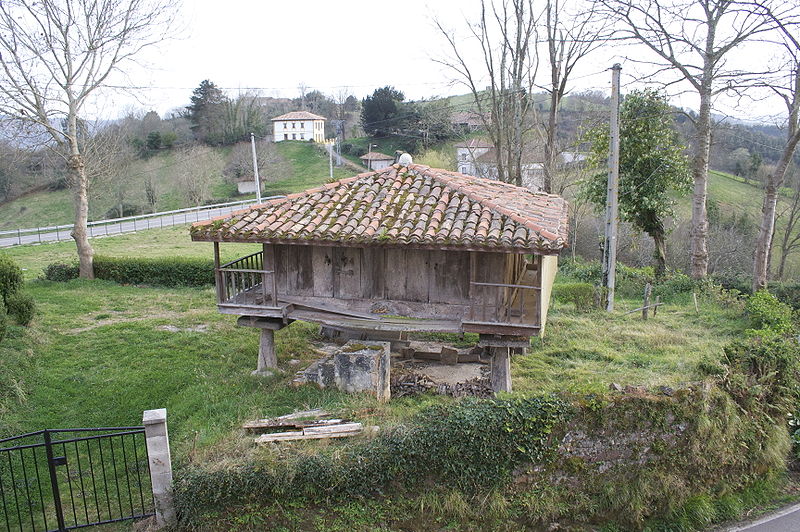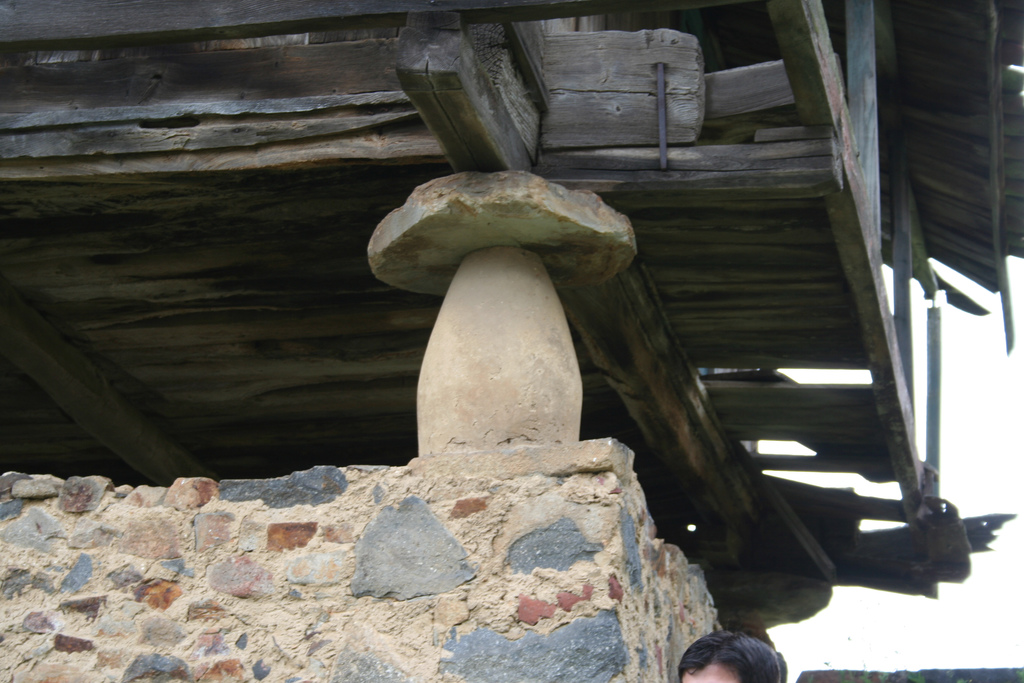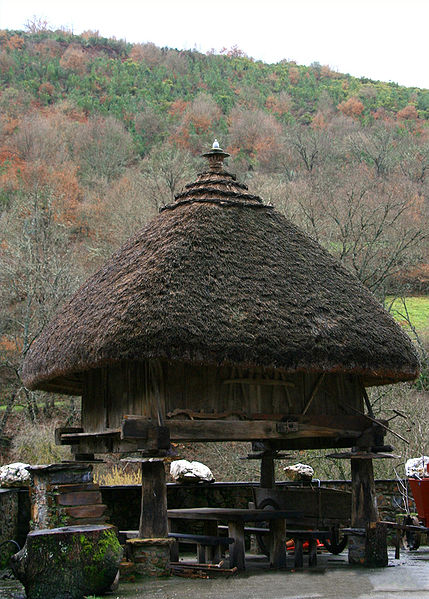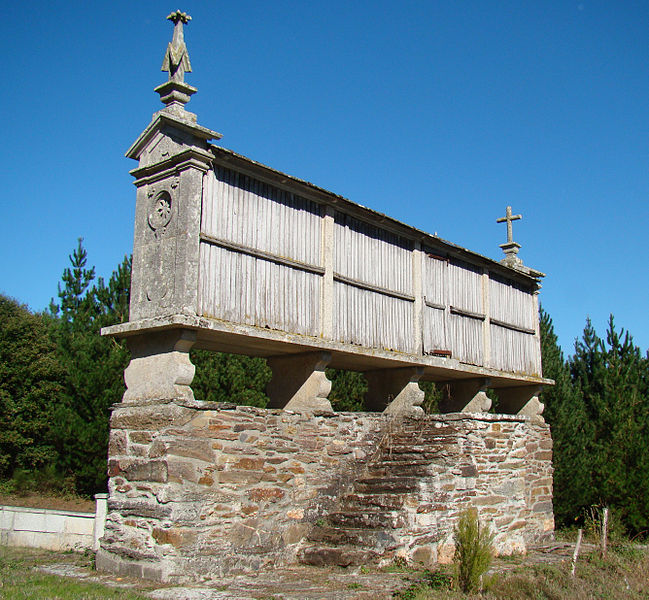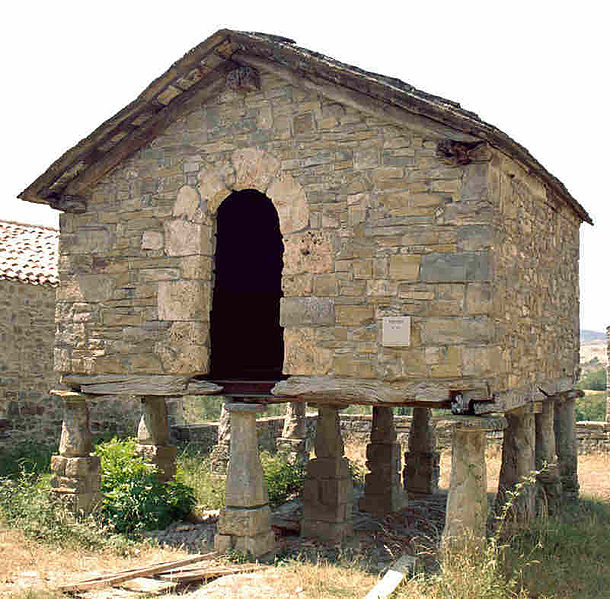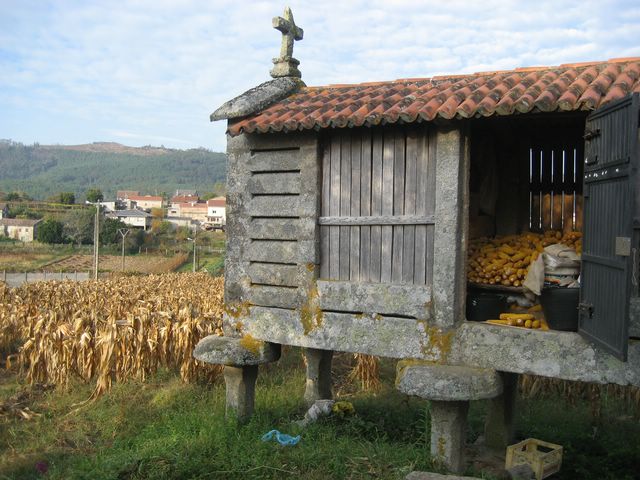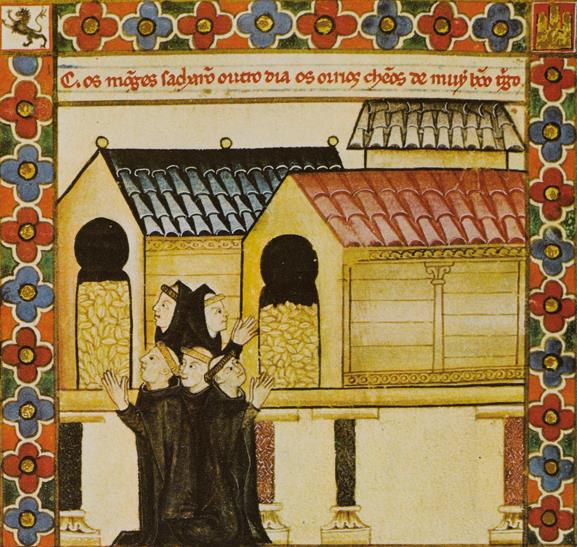Today’s blog post is taking us to the North of the Iberian Peninsula and to a type of building typical for that region: the hórreos. A hórreo is granary built on pillars which lift it above the ground to protect the stored grain and produce from water seepage. The pillars are topped by the so-called ‘staddle stones’ which prevent the access of rats and vermin. The oldest hórreos still in existence date from the 15th century. There are about 18,000 hórreos and paneras (hórreos with more than four pillars) in Asturias. There are several different types of hórreo, which vary according to the materials used for the pillars and decoration and the characteristics of the roof (thatched, tiled, slate, pitched or double pitched). Hórreos can be built in stone or made from wood and slits in the side walls allow ventilation.
Hórreos are known under different names, according to their region: In Galicia, they are called hórreo, paneira, canastro, piorno or cabazo, in Asturias hórreu or horru, in Basque they are called garea, garaia or garaixea and in Portugal espigueiro, canastro, caniço or hôrreo.
Also the staddle stones, which protect the grain from rodents, have different regional names: mueles or tornarratas in Asturian, zubiluzea in Basque and vira-ratos in Galician. The pillars are called pegollos in Asturian, esteos in Galician, and abearriak in Basque.


